Bucharest is Romania’s capital and largest city. As one of the satellite states of the USSR, it has a complicated past. The former Soviet Union’s characteristic touches are present even today in some of Bucharest’s iconic buildings. The symmetrical red gardens, the prefab facades and the large, brutalist-style buildings and boulevards. Then, the monuments and sculptures to celebrate the victory of the city wrenching free from its oppressive past.
Of course, Bucharest is more than its Soviet-related past. From the Peasant museum to celebrate the country’s historical ways of life to the historically significant Herastrau park, Bucharest has a lot to offer.
While Bucharest wasn’t quite my favorite Eastern European capital, it has a lot going for it in its own right. There is a lot to see and do both in Bucharest proper and as day trips from the city.
Here are 18+ things to do in Bucharest in under a week!
Visit Romanian Peasant Museum
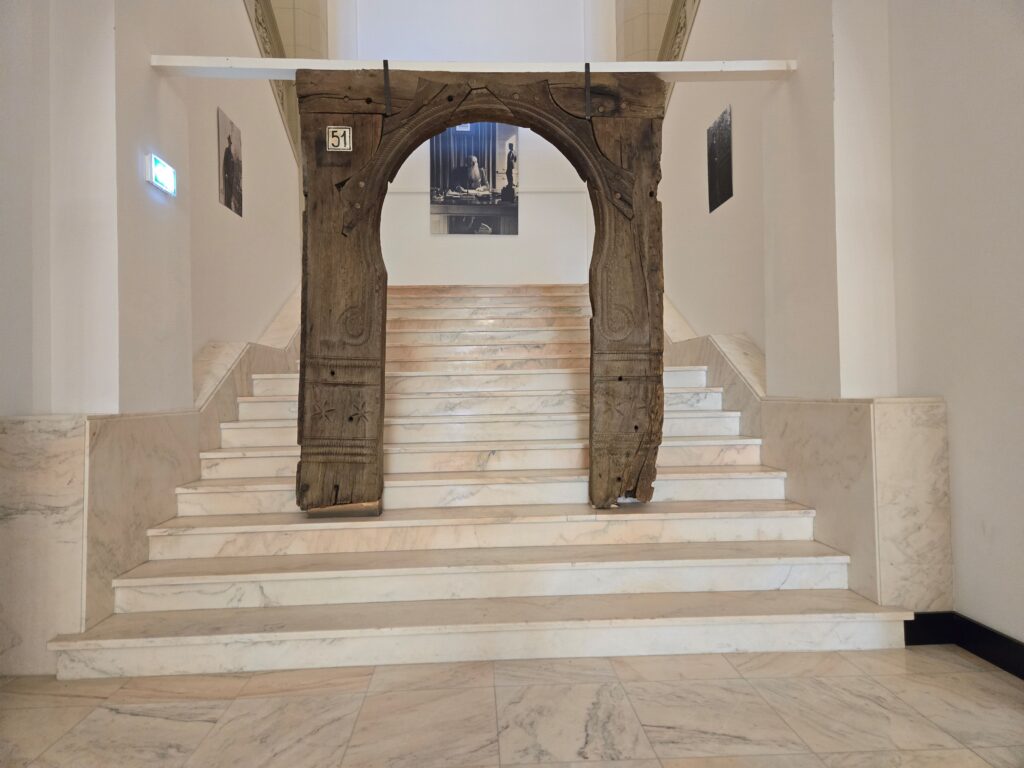
The Romanian Peasant Museum in Bucharest aims to showcase snippets of peasant life in Romania’s villages throughout history. You’ll find examples of clothing, pottery, buildings, artwork and more from the 18th-19th century across the country.
The signs are currently (as of June 2024) only in Romanian, so you won’t get in-depth knowledge of the exhibits if you don’t speak the language. However, you can still get the gist, and the tickets are affordable enough to make it worthwhile (~$2 USD). If you don’t want to spend money to visit a museum where you can’t understand the signs, you can look for free admission days. The museum took me about 45 minutes to visit, but many parts of it were under renovations.
Admire the Triumph Arch
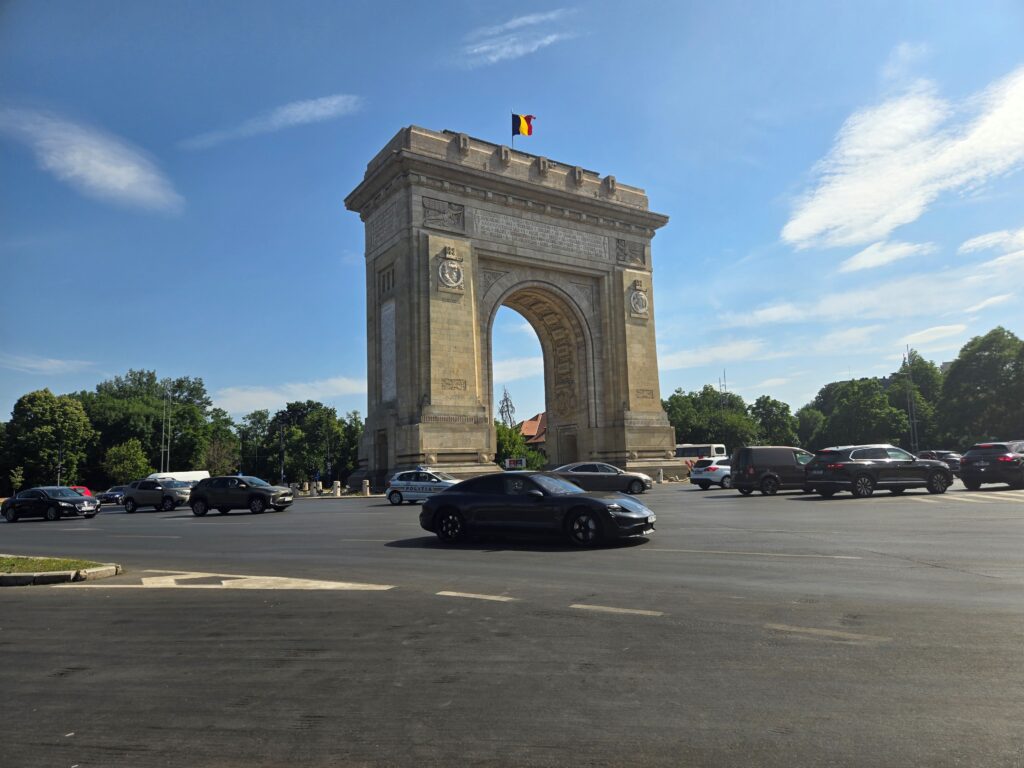
Not far from Park Mihai I stands Romania’s Triumph Arch. Similar to its French counterpart, it stands in the middle of a busy (though not as busy as Paris) roundabout. It is about as impressive in its stature and design.
There are doors that make it seem like you can climb up into and on top of the arch, like you can do with the Arc de Triumph in Paris. But someone locked them. I’m not sure if there are times when they are open to the public, if they lead to the top.
Enjoy Park Mihai I and Lake Herastrau
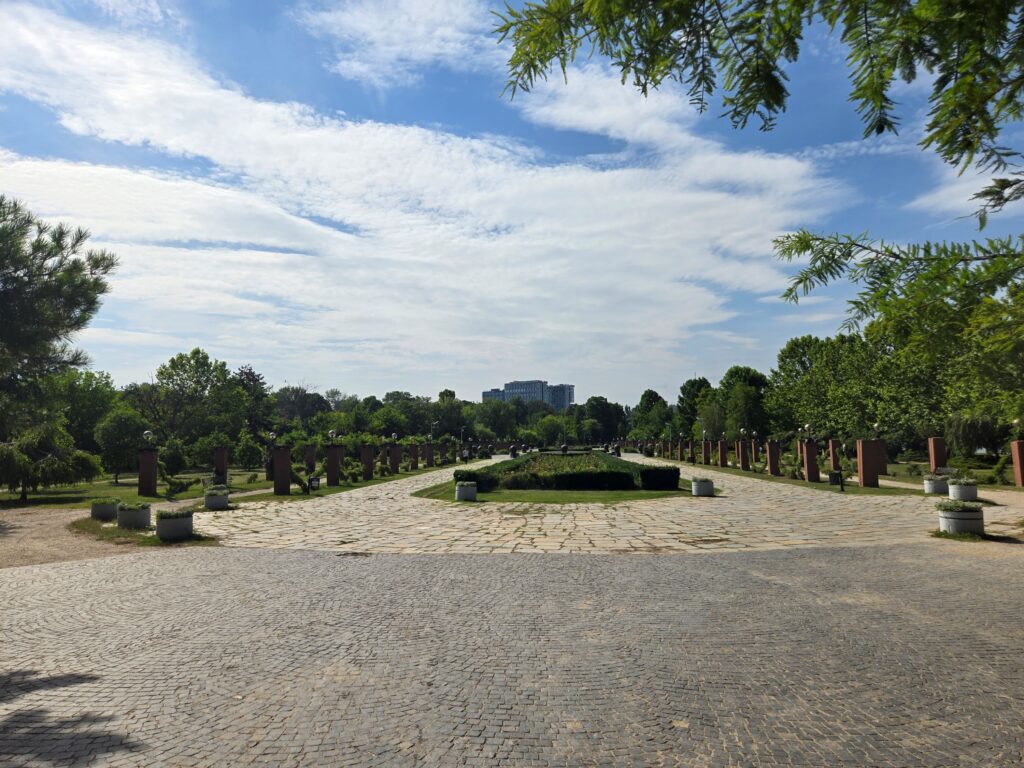
Park Mihai I is one of the most historically significant park in Bucharest. The area where the park stands has been inhabited since the Paleolithic area. It was once a well-known area for the Romanian elite, where the ladies in waiting strolled in the 19th century.
The park has been open to the public since WWII. It is Bucharest’s largest park. You can stroll along Lake Herastrau (after which the park was once named), then walk back up the middle of the park where you can appreciate the symmetrical gardens and sculptures of world leaders. It is a must do thing to do in Budapest.
Find the Michael Jackson Monument
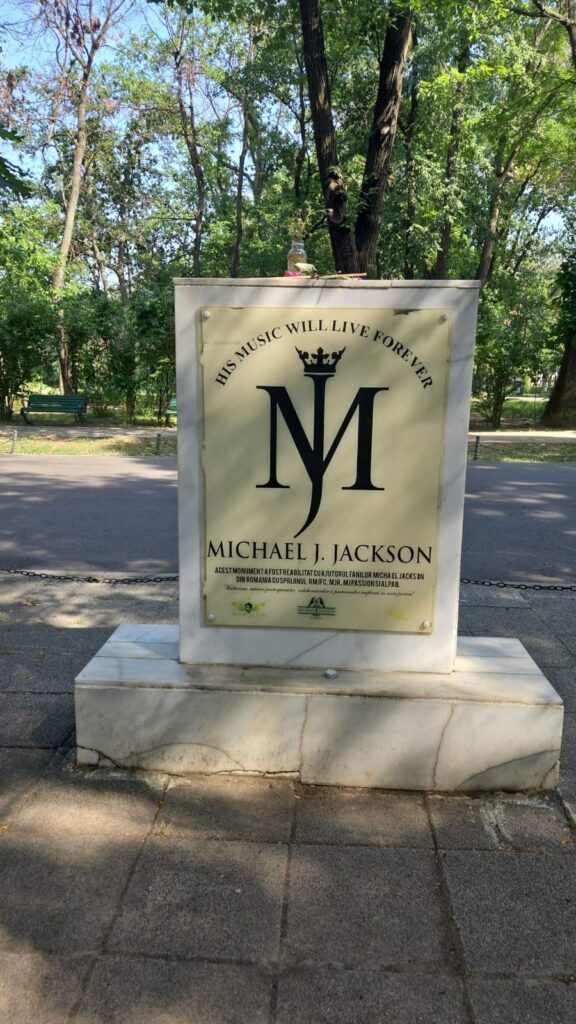
In 1992, soon after the collapse of the Soviet Union, Michael Jackson took his tour to Romania. During the Bucharest concert, he famously opened it by mistakenly saying, “Hello Budapest!”
Despite this fumble, the pop icon is still quite beloved in Bucharest (and many of the former Soviet states and satellite countries). He even has a monument dedicated to him in Bucharest. It’s not far from Park Mihai I, and you should go find it – especially if you’re a fan.
Go on a Free Walking Tour
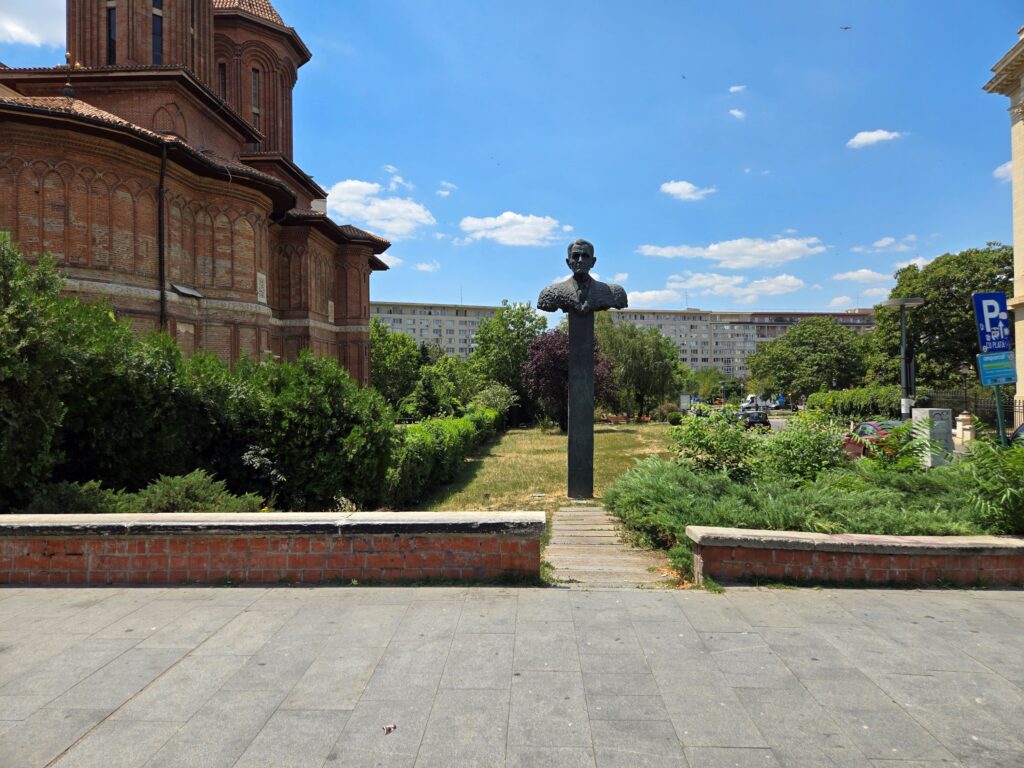
I’m a big fan of free walking tours in cities. It’s a great way to find your bearings in a new city and get to know more of its history and famous sites. I also enjoy finding tours with a bit more of a unique theme to it, and Bucharest has a few of those.
I took one of the Communism walking tours in Bucharest. Partially because I wanted to compare it to the one I took in Krakow. Unfortunately, it fell short of the Nowa Huta tour, but still had some interesting tidbits. For example, I learned that there were buildings in central Bucharest that did not fit the USSR’s preferred aesthetic. But instead of demolishing the buildings, they built a facade in front of them to fit the Soviet ideals.
There are plenty of walking tours in Bucharest to choose from, so you can find one that interests you most.
Tour Casa Ceausescu
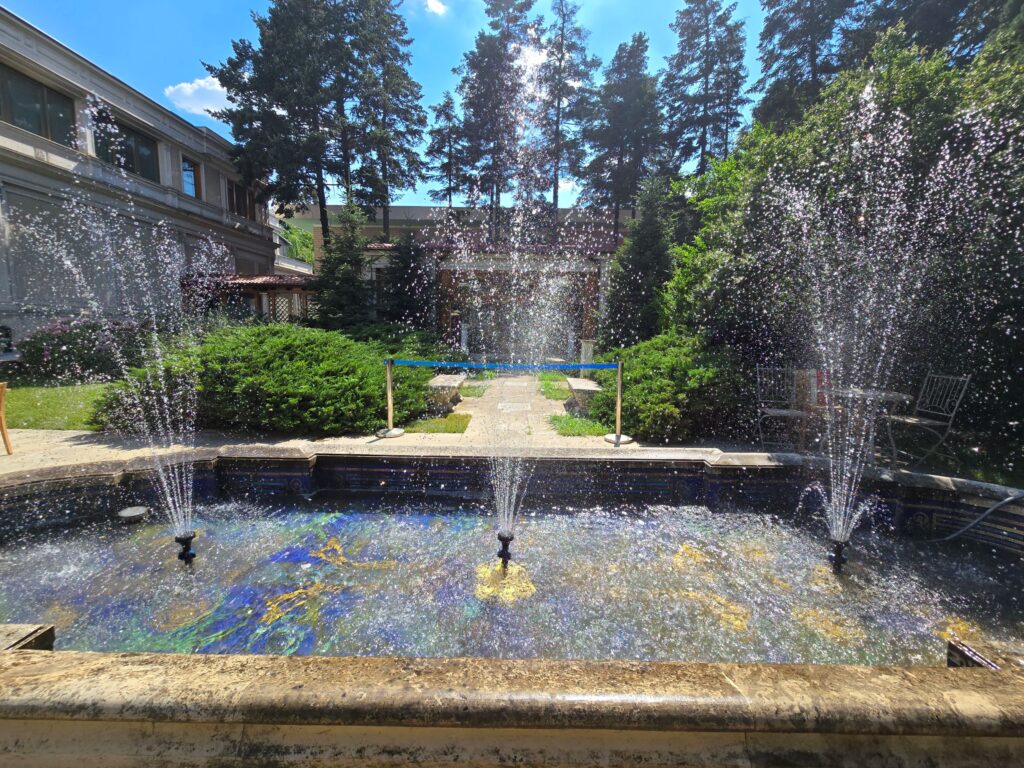
Nicolae Ceaușescu was the secretary general and last leader of the Romania Communist party before it collapsed in 1989. At that time, he and his wife tried to flee and then died.
Before all of that went down, he and his family lived in the lap of luxury. It was a stark contrast to the majority of Romanians living in stark poverty throughout the country. The stories say Ceausescu didn’t quite know their true plight. When he would visit the cities, people would stage markets to look like they all had excess food. In the villages, they’d add extra apples to the trees so that he’d think they were flourishing.
Whether you believe he was really in the dark or not, the reality is that people were suffering, and he had a large and beautifully decorated mansion amongst it all. Despite the looting efforts following the collapse of Romania’s communist party, the mansion and its contents stand.
You can only visit the mansion on a guided tour that lasts about an hour. You’ll learn more about the full Ceausescu family and their decorating styles. The mansion and its grounds are really quite beautiful, especially the recreation room.
Note that if you want an English tour, you should book ahead of time. When we arrived, the English tours were all sold out. We ended up on the tour with the Romanian guide, with an English audio guide in our ear. You cannot take pictures inside the mansion, but can on its grounds.
See the Memorial of Rebirth at Revolution Square
In 1989, Romania had a revolution and overthrew the leaders of the communist party. The gathering area now known as “Revolution Square” was the central point of this revolution.
To commemorate this revolution, a tall white obelisk stands in the middle of the square since 2005. It serves as the centerpiece of Revolution Square, though some of the locals criticize it and consider it an eyesore. Love it or hate it, you can’t miss seeing it when in Bucharest.
Visit the Former Headquarters of the Communist Party
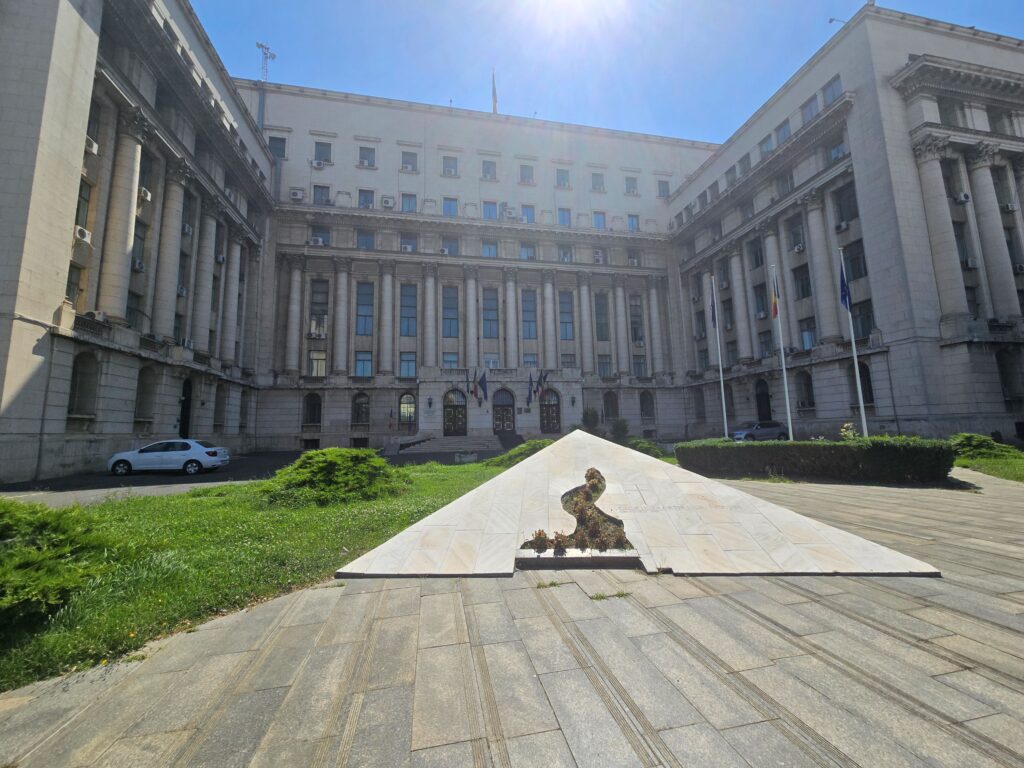
At the edge of Revolution Square, you can also find the building that housed the Central Committee of the Communist Party. This building marks where the most important Communist Party leaders once gathered.
The building’s balcony is its most famous section. Here, Ceausescu stood and delivered his last speech as the leader of Romania’s Communist Party. He and his wife soon fled this building via helicopter.
Today, it houses Romania’s Ministry of Administration and Interior, but its history remains very apparent.
Admire the Palace of Parliament
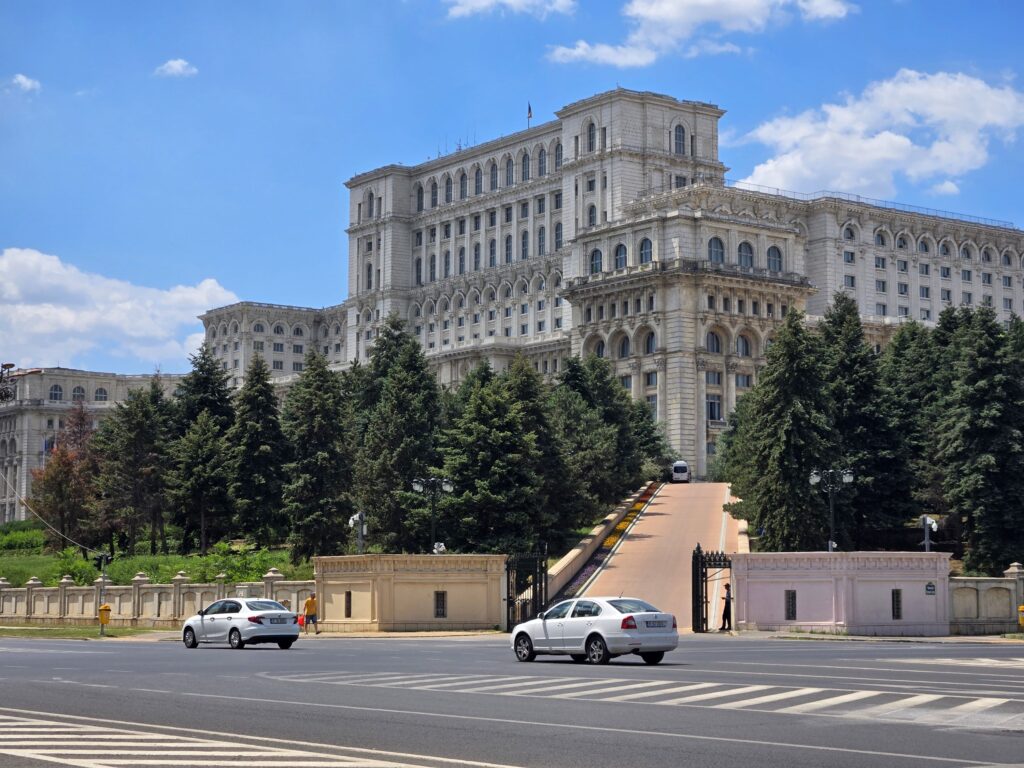
A shining example of Soviet Brutalist architecture, Romania’s Palace of Parliament looms impressively large in Bucharest. Just looking at this building, you get a sense for just how heavy it must be and wonder how it’s not already entirely in the ground.
It is somewhat reminiscent of Bucharest’s Parliament Building, and that is not entirely an accident. However, it lacks some of the charm. While Bucharest’s Parliament inspires awe at its architectural beauty, Bucharest’s inspires awe in its sheer size.
Still, it is definitely worth a gander, even from afar. Sections of the building are typically open to visitors, but not when I was in Bucharest.
Walk Down Calea Victoriei
Calea Victoriei is a major street in Bucharest and one of the most historically significant streets in Romania. Since the 17th century, the street has been used as a major trade route between Bucharest and Brasov. It was also the first street in Bucharest lit by candles at night.
Today, the street sits in one of Bucharest’s main districts of Sector 1. You’ll find plenty shops, restaurants, sculptures and landmarks lining it. Most tourists will stay in or near Sector 1 as it has many historically significant sites, so it is definitely worth taking a stroll down this boulevard.
Explore the Old Town
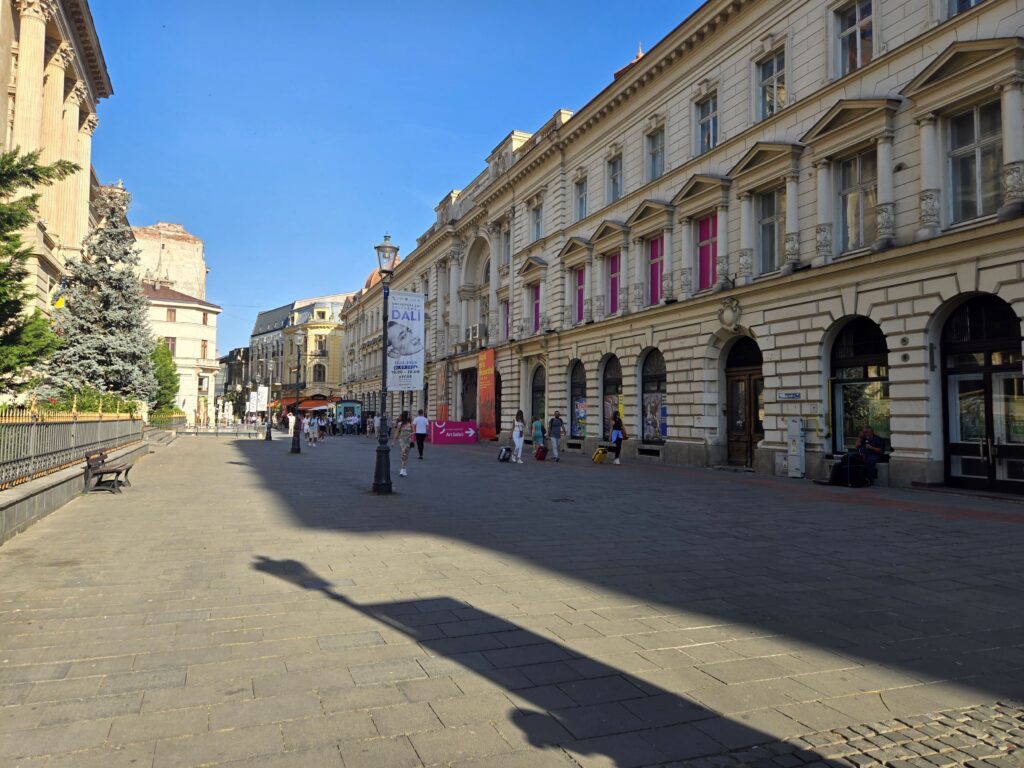
Bucharest’s Old Town is its primary historical center and one of the oldest parts of the city. The infamous Vlad III (Vlad the Impaler) built his Princely Court here in the 1400s. In the 16th century, the Old Town was the trading center of Bucharest. Artisans and merchants gathered here to sell their goods in their colorful square.
Today, some of the Old Town’s excavated medieval walls make up part of the perimeter of the area. There are many shops, restaurants and clubs brimming with tourists and hosts beckoning to tourists.
Honestly, it can be kind of unpleasant to walk through some of the areas of the Old Town for this reason, but the architecture and historical significance are the main reasons to do so. At one point, Bucharest was called the “Paris of Eastern Europe,” and the Old Town is the main area you can understand this nickname.
Walk around Lake Cișmigiu
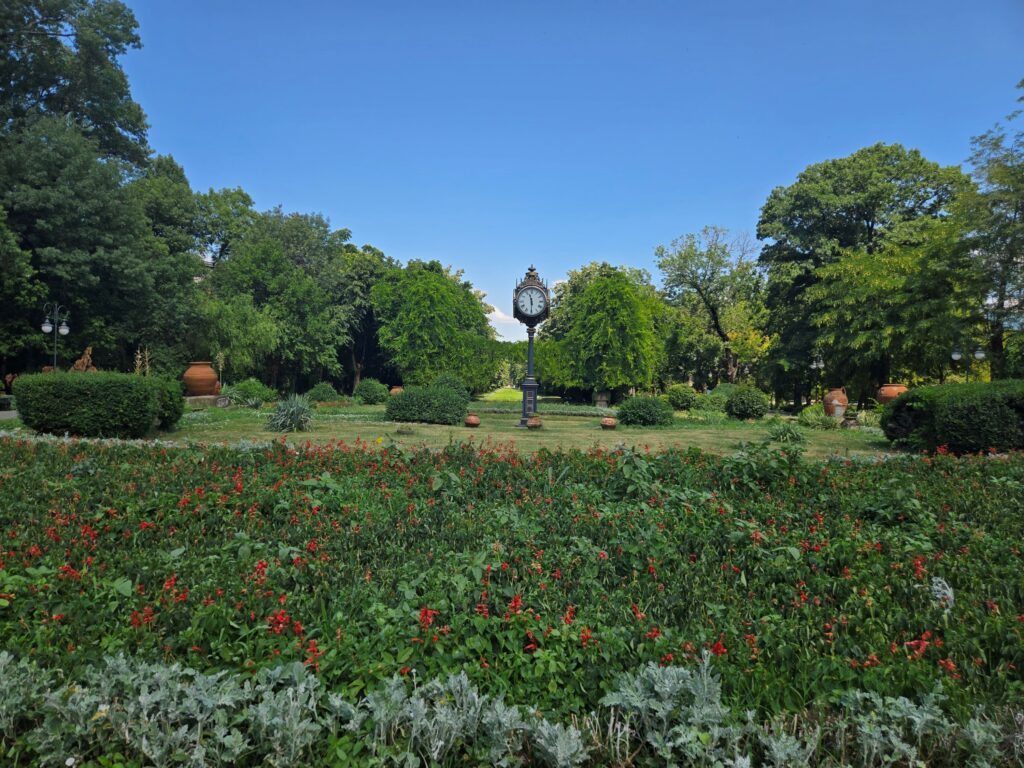
Also located in Bucharest’s Sector 1 is the popular Lake Cișmigiu. This lake and surrounding gardens is a popular gathering place for locals and tourists alike in Bucharest. You can enjoy time walking around the lake and admiring the gardens, or relax next to it. In the middle, a specific section is reserved for wading birds.
I visited in the summer, but the lake area apparently transforms in the winter. It becomes a temporary skate park.
See the Romanian Anthenaeum
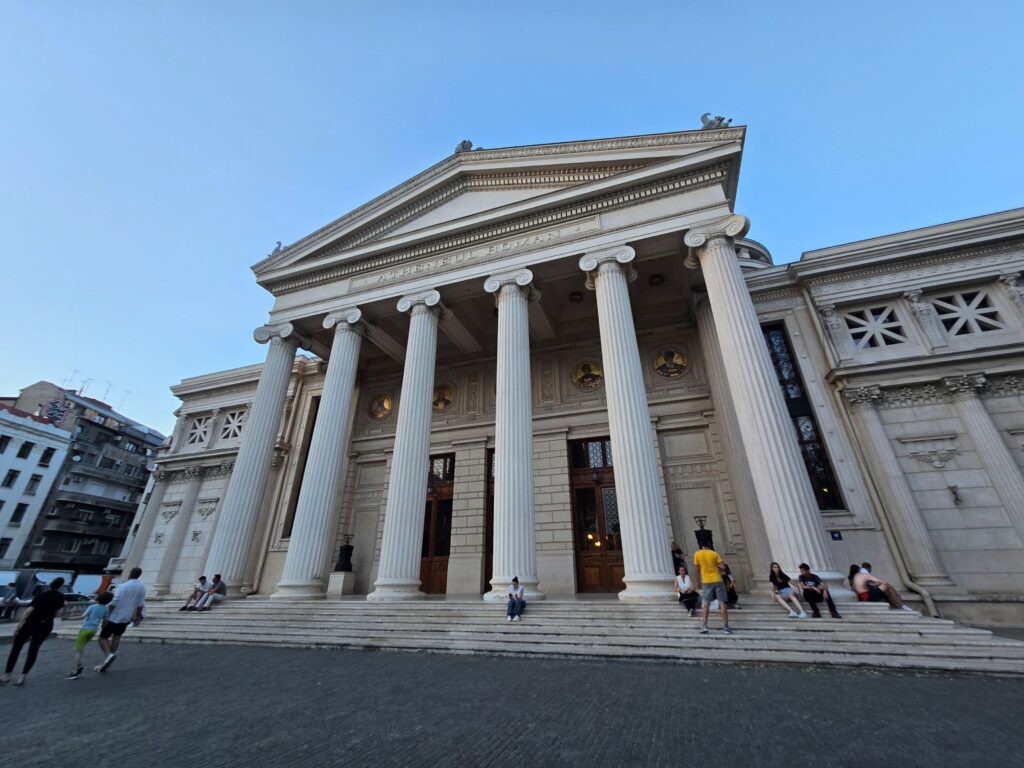
Located in the center of Bucharest, the Romanian Anthenaeum is a famous landmark and one of the most beautiful buildings in the city. Originally meant to be dedicated to art and science, today the Anthenaeum is the most prestigious concert hall in the city. It is the home of the George Enescu Philharmonic and festival.
The building is beautiful and ornate, with a domed roof and large Roman-esque columns erected in the front of the building. It is worth at least seeing from the outside.
Visit the Stavropoleos Monastery
Stavropoleos was an Eastern Orthodox monastery built for Romanian nuns in Bucharest in the 18th century. Throughout the years, the monastery suffered from both natural and human struggles, including earthquakes, demolitions and threats of destruction under the post-WWII communist regime.
Today, only the church of the monastery remains, and it is considered one of the most beautiful churches in Romania. Outside of mass, you can visit the church to see its intricate decor and the religious art recovered from other demolished churches under communism.
Sample Romanian Wines at the Tohani Vineyard
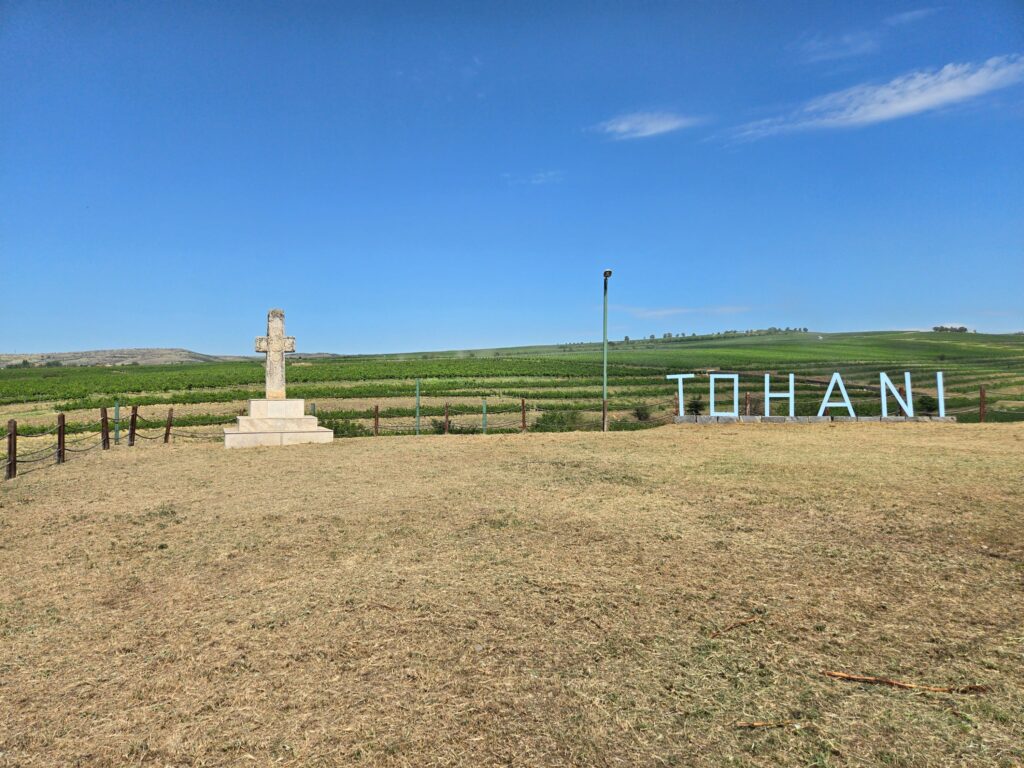
Located about 90 minutes outside of Bucharest, Tohani is a historical vineyard in Romania dating back to the 1700s. You can easily visit on a half-day trip from Romania’s capital.
Tohani is notable for two main reasons. It gets 14 more sunny days per year than other wine growing regions of Romania, meaning the grapes reach maturity more quickly. The estate was also a passion project of Prince Nicolae and the love of his life Ioana Doletti, a woman who was not born into nobility but who he married anyway.
When visiting Tohani, you can tour the vineyards, wine cellar and estate, learning more about its historical significance. Then, you can sample a variety of wines, including their famous Neagra – a red wine that is so dark it is almost black.
I visited on a bike tour through Airbnb Experiences. It was a lovely way to explore the vineyards and take in the rolling hills of the vineyards. The uneven ground made it a bit challenging, but it was still fun. Afterwards, we got to sample a wide variety of wines.
Take a Day Trip to Bran Castle
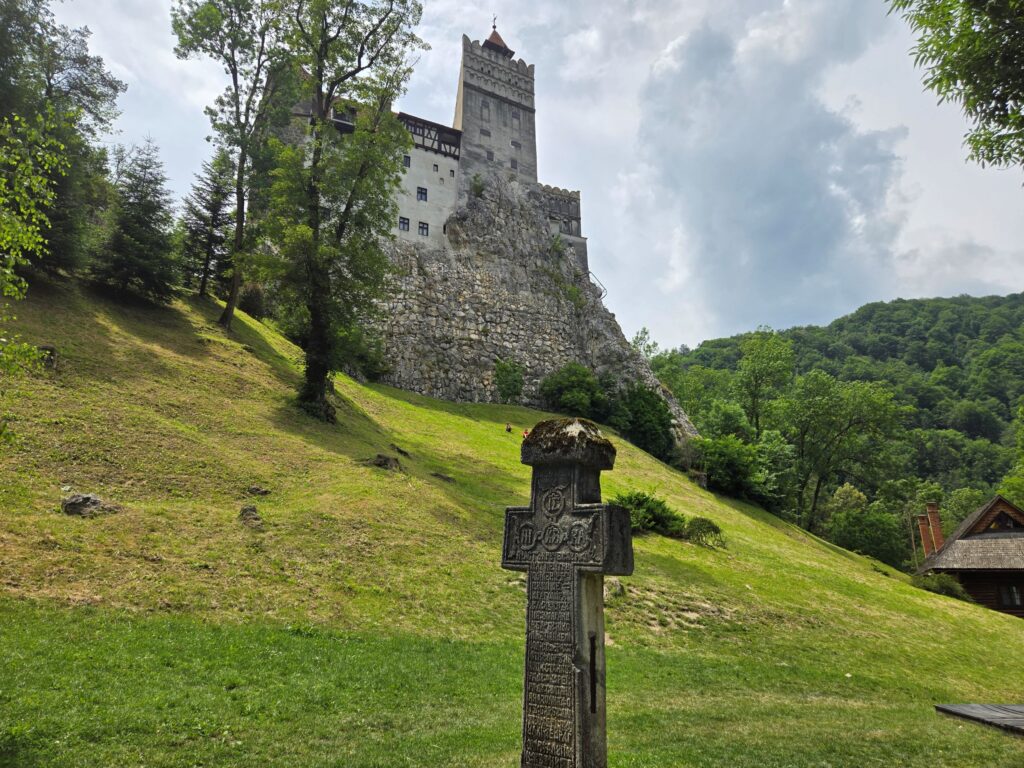
Bran Castle is perhaps the most famous castle in Romania. People know it as the castle setting for Bram Stoker’s Dracula, though technically there is no real evidence that is the case. It is also tangentially associated with Vlad the Impaler, widely considered the inspiration for the book’s titular character.
The castle itself is famous for being the fortress on the border of Wallachia, and was a strategically important military post through the 19th century.
In 1920, the castle was given as a holiday home to Queen Marie of Romania as a thank you for negotiating terms for the Kingdom of Romania following WWI. During the communist era after WWII, it was seized by the government, then returned to rightful owners in the early 2000s. Today, it functions as a museum.
Its primary exhibits are about its history from the 13th to 20th century, with the primary focus on Queen Marie and how she updated and decorated the castle. There are a couple of areas related to its Dracula lore, and even a special exhibit on medieval torture in Romania.
Bran Castle is a better day trip from Brasov given its proximity to that city. However, it is under three hours from Bucharest, so can also be visited as a day trip from that city as well.
Eat Mici
Mici, also called mititei, are a traditional Romanian dish and a staple of the country’s cuisine. If you eat meat, you must try mici at least once while in Romania.
They are small ground meat logs, usually made with a mixture of beef, lamb and pork and a variety of spices. It’s traditionally eaten with mustard dip, though you can often get it with ketchup or other sauces if you’re at a more touristy restaurant or food truck. It’s also typical to get it with a side of french fries. Mici ends up being a heavy meal, but is definitely worth trying, especially if you can get it at a restaurant that spices it well.
Drink Palinka
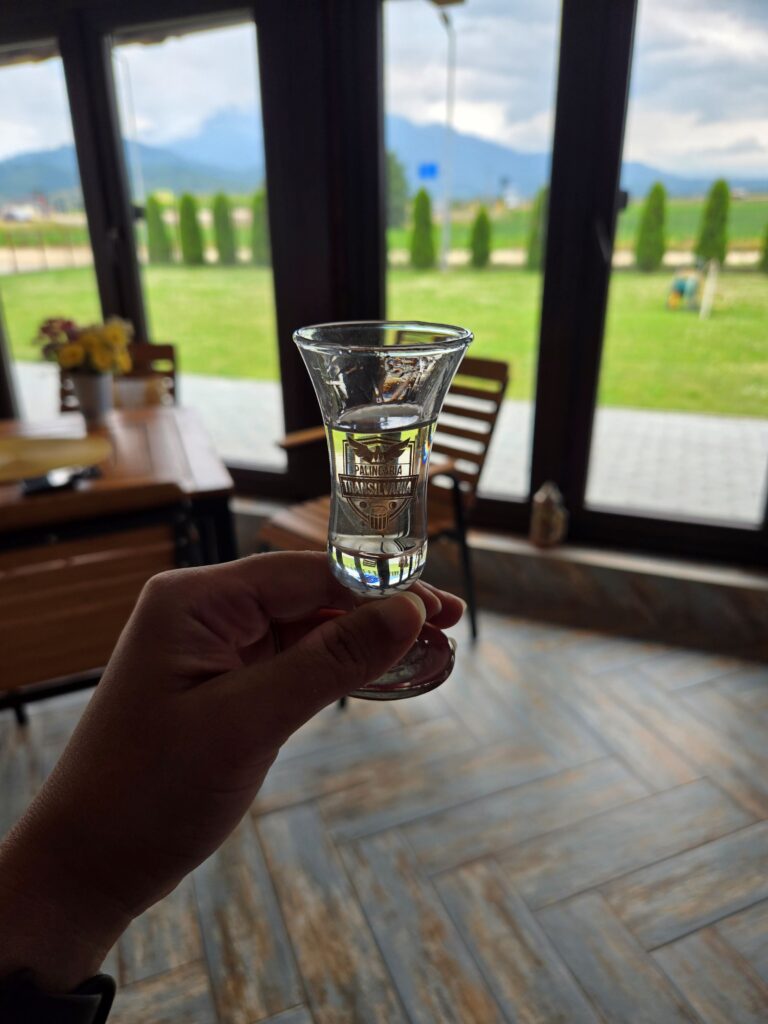
Palinka is a traditional type of strong brandy made with fermented fruit. Technically, it is Hungarian, but the spirit is popular in Romania as well. In fact, there are palinkarias you can visit in Romania.
You can get a traditional plum brandy, or try different fermented fruits. For example, there a popular flavor is quince.
Enjoy a Garden Bar
If you’re visiting Bucharest in the summer, one of the best ways to spend an afternoon is to find a garden bar. These are outdoor bars set up throughout the city, often tucked conspicuously away behind buildings and inside courtyards.
Here, you can enjoy a cocktail or pint of Ursus Unfiltered and enjoy the late afternoon sunlight.
Additional or Alternative Things to do in Bucharest
If you’re in Bucharest for a longer period of time, or are just looking for alternatives to some of what I’ve suggested above, here are some ideas.
- Gusti National Village Museum: An open-air ethnographic museum showcasing Romanian village life.
- Manuc’s Inn: The oldest operating hotel in Bucharest, dating back to 1808. You can still visit its restaurant, cafe or bar.
- Fire Tower: A 138-foot (42-meter) structure originally used as an observation tower for firepeople.
- Therme Bucharest: Europe’s largest wellness and relaxation center, filled with pools, spas and an indoor botanical garden.
- Danube Delta day trip: A UNESCO World Heritage Site and considered by some to be the “Amazon of Europe,” you can take a day trip from Bucharest to explore the Delta and see its wildlife. It is about a 4-5 hour drive from Bucharest, so be prepared for a long day.
- Carpathian Mountains day trip: The Carpathian Mountains stretch across several countries in Central and Eastern Europe, but 50% are in Romania. You can reach the Bucegi Mountains in the Southern Carpathians as a day trip from Bucharest.
- Muddy Volcanoes day trip: The Berca Mud Volcanoes are a geological phenomenon of natural gas far below the surface of the earth that pushes clay and water upwards, creating natural mud volcanoes.
Logistics
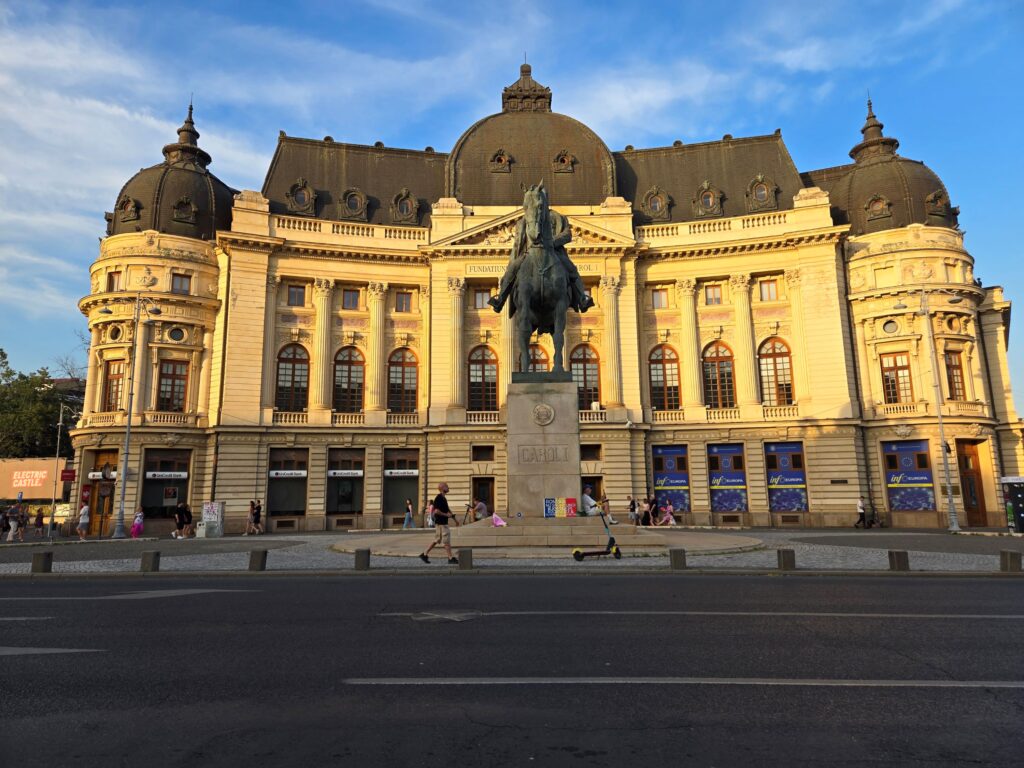
Where to Stay in Bucharest
Bucharest is a large, sprawling city. Although there is a decent metro system and affordable taxis, it is best to stay close to the tourist center for ease and comfort, especially if you’re only visiting for a few days to a week.
The most popular locations are:
- Old Town –
- Pros: In the middle of the oldest part of the city, surrounded by beautiful architecture and easy access to iconic sites.
- Cons: Most touristy part of the city and higher prices.
- Unirii –
- Pros: Easy access to bars and clubs, still accessible to key tourist attractions.
- Cons: Can be noisy at night.
- Calea Victoriei –
- Pros: Good access to boutique shopping and historic landmarks.
- Cons: Can be noisy as it’s the main street of Bucharest.
- Primaverii –
- Pros: Easy access to luxury shopping and restaurants, more upscale part of the city.
- Cons: Can be pricier.
Getting Around Bucharest
Bucharest is a sprawling city, but it’s luckily not too hard to get around – especially if you’re centrally located.
- Metro: There is a metro line that goes from the train station into the city. This metro also Bucharest central well connected.
- Taxi: You can call a taxi or Uber to get you to parts of the city not connected well by public transit. They tend to be affordable, but the drivers are aggressive.
- Walking: The central part of Bucharest is quite walkable, with a number of lovely parts to stroll through in the city. I highly recommend walking through the city when possible.
I would not recommend driving yourself unless you are very comfortable driving in Eastern Europe already. The drivers are quite aggressive, and there is a lot of traffic in Bucharest proper.
Bucharest Safety
Romania has a bit of a reputation for some shady areas, but Bucharest in general is quite safe. The only parts of the city that are considered less savory are outside of the central part of the city and not a place you’re likely to venture as a tourist. Be aware, there are quite a few unhoused people on the streets, which can be uncomfortable if you’re not used to it, but they are largely harmless.
Practice normal precautions like keeping your valuables out of your back pocket and ideally using a cross-body bag to secure them. Stick to well-lit areas at night.
What do you think of these things to do in Bucharest? If you’re planning a visit, reach out if you have any questions!
Pin this post to save it for later.

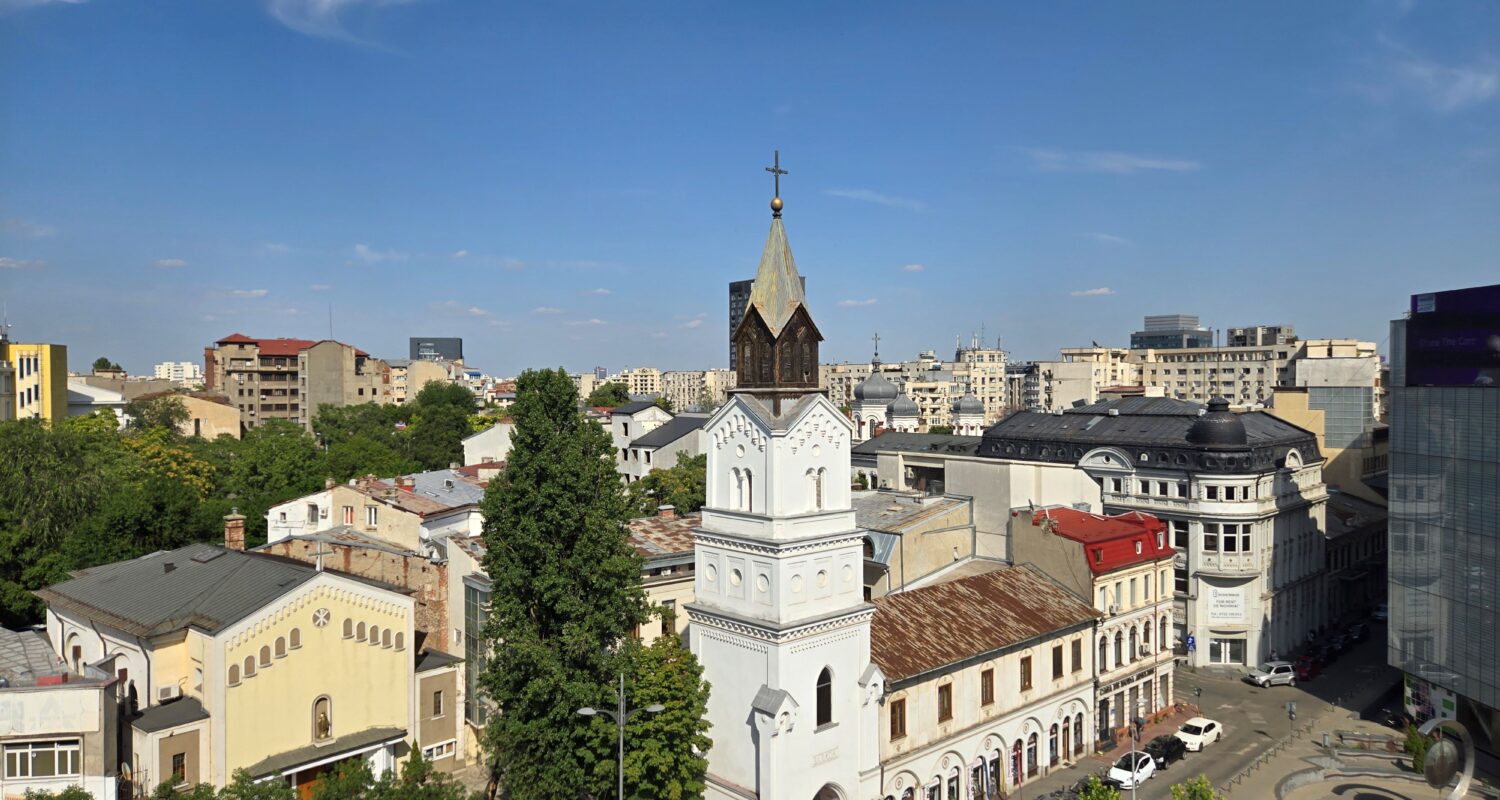
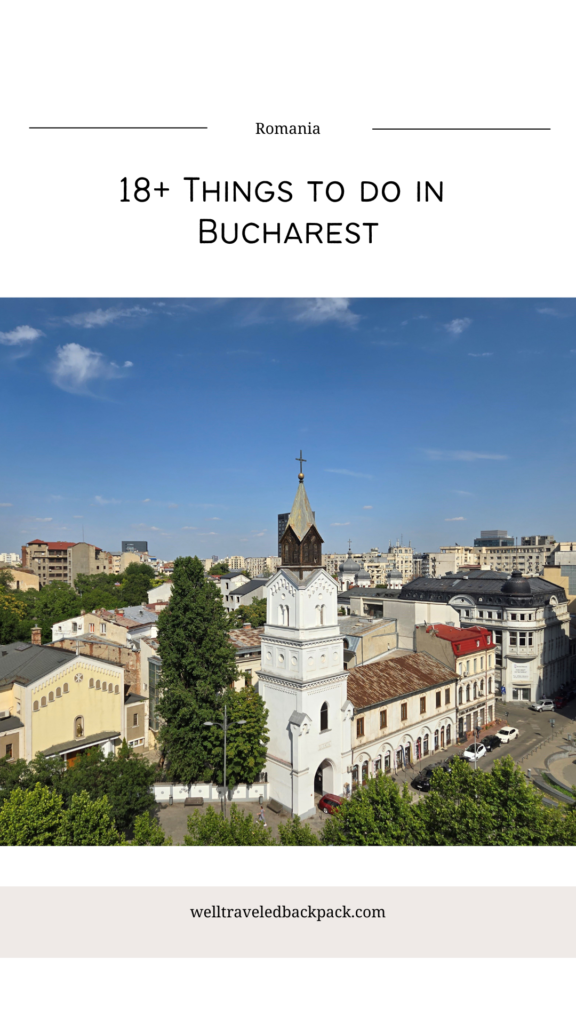
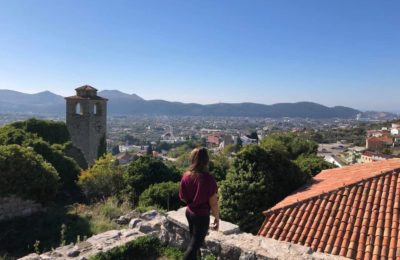

3 thoughts on “Things to do in Bucharest – Romania’s Beautiful Capital”